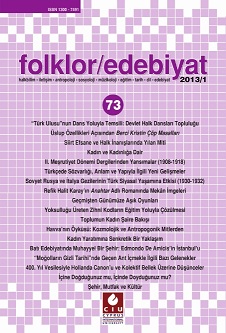“Türk Ulusu”nun Dans Yoluyla Temsili: Devlet Halk Dansları Topluluğu
Representation of “Turkish Nation” Through Dance: State Folk Dance Ensemble
Author(s): Berna KurtSubject(s): Theatre, Dance, Performing Arts, Cultural history, Customs / Folklore, Sociology of Culture
Published by: Uluslararası Kıbrıs Üniversitesi
Keywords: representation; construction of national culture; aesthetics; staging; authenticity;
Summary/Abstract: Turkish State Folk Dance Ensemble, the first professional folk dance ensemble formed by the state in 1975, represents a landmark in the historical development of folk dance staging in Turkey. Creating an aesthetic model in the 80’s, it represents a transitional phase from the first stage presentations by People’s Houses to the formation of professional dance groups like Fire of Anatolia and Shaman Dance Theatre in 2000’s. The Ensemble localized the USSR based Moiseyev Dance Ensemble’s aesthetic model which is based on the huge movement choir’s synchronized performance of stylized folk dances. Whereas Moiseyev’s ballet trained dancers’ glorious collective body was representing the dances of the peoples of the Soviet “Union”; the Turkish equivalent’s was representing those of the “Turkish nation”. The ensemble renewed its repertoire in 80’s, staging new choreographies of the artists from the state opera and ballet institutions. The state TV channel (Turkish Radio Television) broadcasted the ensemble’s performances and made them so popular that Turkish audiences still keep those days’ performances in their visual memory. Currently, many people argue that the ensemble accomplished its historical missions of representing Turkish state and nation abroad and building an artistic model for amateur folk dance groups in Turkey. The problems connected with its institutional continuity and its very aged permanent staff’s performative capabilities come into question -rather than its artistic achievements. Many people in artistic circles argue that it should be privatised like former state folk dance ensembles in other countries. In such a context, two of their last performances, “Drops from Anatolia” and “The Turks”, reveal both the ensemble’e current artistic level and its institutional status. They also demonstrate their will to sustain the historical and political mission of representing a homogenized “Turkish nation” on stage.
Journal: Folklor/Edebiyat
- Issue Year: 19/2013
- Issue No: 73
- Page Range: 9-22
- Page Count: 14
- Language: Turkish

